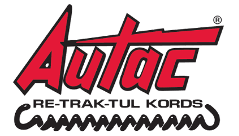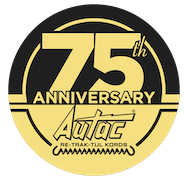Coiled elastic cords, though seemingly simple, are incredibly versatile tools that we often take for granted. These cords, with their ability to stretch and retract, have found their way into countless applications, from securing luggage to playing a crucial role in medical devices. But what exactly makes them so indispensable? In this article, we’ll dive deep into the world of coiled cords, exploring their various types, uses, and the factors that make them a go-to solution for so many needs.
What is a Coiled Elastic Cords?
Definition and Basic Structure
A elastic cord is essentially a stretchable cord that is designed to extend and retract, much like a spring. The cord is typically made from elastic materials that allow it to stretch when pulled and return to its original shape when released. This coiled design not only adds to its flexibility but also ensures that the cord can be compact when not in use, making it highly portable.
Materials Used
The most common materials used in the manufacturing of elastic cords include natural rubber, synthetic rubber (like neoprene or silicone), and sometimes even elasticized fabrics. The choice of material often depends on the intended use of the cord, with some materials offering greater durability, resistance to environmental factors, or stretchability.
Types of Coiled Elastic Cords
Heavy-Duty Elastic Cords
These are designed for more demanding applications where strength and durability are paramount. They are often thicker and made from high-quality rubber or synthetic materials that can withstand substantial tension without breaking.
Lightweight Elastic Cords
Ideal for everyday use, these cords are lighter and more flexible. They are often used in situations where a high degree of stretch is needed but without the requirement for heavy-duty durability.
Specialty Coiled Cords
Specialty cords are tailored for specific applications. For instance, some may be designed to resist extreme temperatures, while others might be coated with materials that prevent slipping or offer UV resistance for outdoor use.
Applications of Coiled Elastic Cords
Everyday Uses
In our daily lives, elastic cords are incredibly handy. From securing items in your car or on your bike to organizing cables at your workstation, these cords are used in countless ways to make life a little easier.
Industrial Applications
In industrial settings, elastic cords are often used for securing equipment, managing tools, or even as part of machinery. Their durability and strength make them suitable for such heavy-duty tasks.
Recreational and Sports Uses
Coiled elastic cords are also popular in the world of sports and recreation. For example, they are commonly used in resistance training equipment, securing camping gear, or even in water sports for tethering items to boats.
Medical Uses
In the medical field, coiled elastic cords can be found in devices like respiratory masks, where they need to securely hold medical equipment in place while allowing for some flexibility and movement.
Advantages of Using Coiled Elastic Cords
Flexibility and Stretch
One of the key advantages of elastic cords is their ability to stretch and return to their original shape. This flexibility makes them incredibly useful in a wide range of applications where a non-elastic cord would be too rigid.
Durability
Thanks to the materials used, elastic cords are often highly durable, capable of withstanding repeated use and exposure to various environmental conditions.
Portability
Their coiled design makes these cords easy to store and transport. Unlike regular cords, they don’t tangle easily and can be compacted into a small space when not in use.
Safety Features
Many coiled elastic cords come with safety features such as secure hooks, which help prevent accidental snapping or injury. This is especially important in both industrial and recreational settings.
How to Choose the Right Coiled Elastic Cord
Determining Your Needs
The first step in choosing the right coiled elastic cord is understanding what you need it for. Are you looking for something lightweight for everyday tasks, or do you need a heavy-duty cord for industrial use?
Considering Strength and Stretch
It’s important to consider how much stretch and strength you require. Heavier tasks will require stronger, less stretchy cords, while lighter tasks can benefit from more flexible options.
Evaluating Durability
Look at the materials used in the cord. If you’re using it outdoors, for example, you might want a cord that’s UV-resistant and weatherproof.
Comparing Prices and Brands
Finally, it’s always a good idea to compare different brands and prices. Sometimes, paying a little more upfront can save you money in the long run due to better durability and performance.
Maintaining and Caring for Coiled Elastic Cords
Cleaning Tips
To prolong the life of your coiled elastic cords, it’s important to keep them clean. Regularly wipe them down with a damp cloth, especially if they’ve been exposed to dirt or chemicals.
Proper Storage
Store your cords in a cool, dry place. Avoid exposing them to direct sunlight for extended periods, as UV rays can weaken the elastic over time.
How to Avoid Common Issues
To avoid issues like snapping or overstretching, always use your cords within their recommended limits. Don’t try to stretch them beyond their capacity, and inspect them regularly for signs of wear and tear.
Safety Tips When Using Coiled Elastic Cords
Handling and Usage Precautions
Always handle coiled elastic cords with care. When stretching them, do so slowly and evenly to avoid snapping. Ensure that any hooks or fasteners are securely attached before use.
Ensuring Safe Stretch Limits
Never exceed the recommended stretch limits of your cord. Overstretching can weaken the elastic and increase the risk of snapping, which can cause injury.
Avoiding Wear and Tear
Regularly check your cords for signs of wear, such as fraying or thinning. Replace any damaged cords immediately to avoid accidents.
Innovations in Coiled Elastic Cords
New Materials and Technologies
The development of new materials has led to coiled elastic cords that are stronger, more flexible, and more resistant to environmental factors. For example, some newer cords incorporate nanotechnology to enhance their durability.
Eco-Friendly Alternatives
As sustainability becomes more important, manufacturers are developing eco-friendly coiled elastic cords made from biodegradable or recycled materials.
Enhanced Safety Features
Some of the latest coiled elastic cords come with additional safety features, such as locking mechanisms or enhanced grip surfaces, to prevent accidents during use.
The Future of Coiled Elastic Cords
Trends and Predictions
As technology continues to advance, we can expect coiled elastic cords to become even more versatile and specialized. There’s likely to be an increase in smart cords that integrate with other devices, offering new levels of functionality.
Potential New Applications
The future could see coiled cords being used in even more innovative ways, from wearable tech to advanced medical devices, pushing the boundaries of what these simple yet powerful tools can do.
Conclusion!!
Coiled elastic cords are a versatile and essential tool in many aspects of life, from everyday tasks to specialized industrial and medical applications. Their flexibility, durability, and ease of use make them a preferred choice for many.




Recent Comments